Some of us want to go on a trip if it is possible during summer vacation in July. Currently, we can find mural villages in many travel destinations. The mural village is a public art project designed to improve the aesthetic environment of deteriorated areas and allow creative art by local artists. This is a kind of urban regeneration. Urban regeneration is a project that revives deteriorated areas.
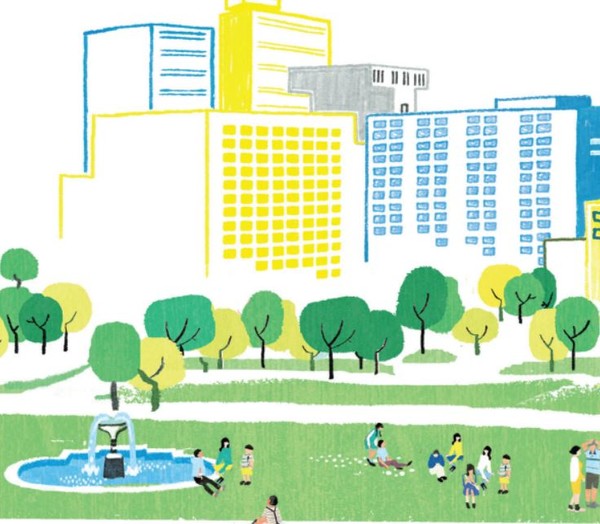
Definition of Urban Regeneration
Urban regeneration is a plan to revitalize a city through introducing appropriate programs along with physical redevelopment. This is a solution to solve the physical, social, and economic problems of old towns and preserve an urban community sustainably. The preservation of unique social and cultural characteristics of regions and the revitalization of those regional industries and economies are made possible.
First, economic activity is promoted through efficient land use after urban regeneration begins in deteriorating towns. Various crimes and environmental pollution are generally reduced as the urban environment is improved. Moreover, roads and parking lots are typically expanded for residents. Pedestrian public areas and parks are then improved to provide a pleasant environment.
Gentrification
Gentrification is a phenomenon in which natives are displaced and upper-class citizens gather into the deteriorated areas as they are developing.
Artists and small enterprises flow into the deteriorated areas, forming regional characteristics. The population increases as the area becomes famous. Then, rental prices also increase, making the area a large-scale commercial district.
Yet, existing stores with identity and uniqueness are reduced as gentrification continues. It may lead to the loss of regional characteristics. Conflicts also may arise between settlers and residents, as former residents leave the area due to increased rent.
Transition of Korea’s Urban Regeneration
Korea’s urban regeneration begins with its capital city: Seoul. In the mid-twentieth Century, Seoul experienced rapid development and industrialization. It provoked a reckless redevelopment, causing destruction of communities and damage to natural landscapes.
The urban regeneration in Korea currently follows these steps - reconstruction, revitalization, renewal, redevelopment, and regeneration. Since 2008, urban planning has been held to physically reconstruct cities. However, as it developed over time, people focused on growing the private sectors rather than national and local governments. Yet now, urban regeneration establishes creative, rehabilitated, and sustainable areas, also putting effort into establishing policies for integrating changes. The former approaches in physical and quantitative plans have been reversed to qualitative innovations. Here are some cases of urban regeneration in Seoul.

Seoullo 7017
In 1970, the Seoul Station overpass was constructed, which symbolized industrialization. After determining low levels in the safety evaluation, the highway was turned into a pedestrian walkway in 2017. ‘Seoullo 7017’ was named after these two memorable years: in 1970 the ‘road for cars’ was built and in 2017 the ‘path for people’ was built. The ‘lo’ in Seoullo means ‘road’ in Chinese letters. It has now become a cultural hub, focusing mainly on improving peoples’ lives. There are various entertaining features such as pianos, photo booths, cafes, gardens, an observatory and much more. The walkway takes a role in connecting the formerly severed region and the Seoul Station region; connecting history with the present age, just as the name connects 1970 and 2017.
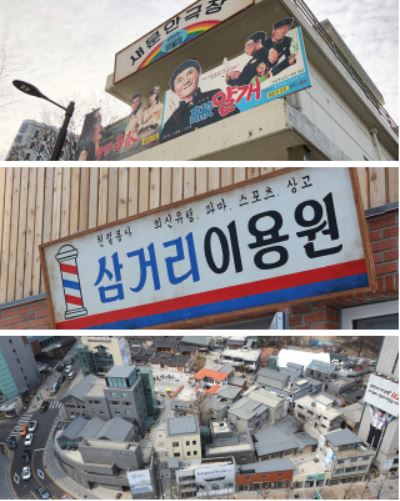
Donuimun Museum Village
‘Donuimun’ is another name for ‘Seodaemun’, the historic, large western gate of the Fortress Wall of Seoul. In 1915, it was destroyed by the Japanese urban plan. The small town was meant to be completely restructured in order to construct a community park. However, due to its historical value, it was regenerated into a museum village in 2003, in an effort to preserve the original sites. There is now a plaza for performances, Donuimun exhibition halls, wall paintings as photo zones, and more to catch the eye. The Exhibition Halls contain: the Hall of Independence Fighters, which commemorates the March 1st Movement, the Donuimun Gallery, which shows the Donuimun Museum Village’s history, the Donuimun Gurakbu, which introduces immigrants of the early 20th Century, and more.
Urban regeneration is urban planning that improves the scenery of the city by repairing landmarks, such as the case in Seoul. It also includes reformation of transportation systems and ‘green space’ policies. Let us check some examples of urban regeneration all over the world.
Find Urban Regeneration Abroad
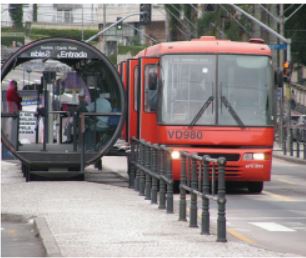
Curitiba, Brazil
An Eco-friendly city is a concept that regards the environment as a top priority. These cities provide citizens a healthy life and emotional stability. They play a role in attracting tourists and making the city's image positive. Curitiba is a well-known example of an eco-friendly city.
Curitiba had grown economically as it was industrialized up until the 1970's. However, environmental problems arose as the population grew. Jaime Lerner, mayor of Curitiba, promoted urban plans to reduce traffic jams and solve environmental problems. The BRT (Bus Rapid Transit) system, articulated bus, and cylindrical tube bus stations were introduced to build an effective transportation system for citizens. In addition, many parks such as Parque Barigui and the Botanical Garden of Curitiba were created, which provided citizens a place to enjoy their leisure time.

Bilbao, Spain
The city of Bilbao in Spain had been considered the central area of industrial and financial fields in Basque Country, due to the abundant iron ore production until the 1980’s. However, the city gradually lost its competitive edge as the iron ore industry became stagnant.
Bilbao has since focused on improving cultural values to increase the competitiveness of the city. First, the Guggenheim Bilbao Museum began development. It is now considered to have played one of the key roles in Bilbao urban regeneration. This city has also continued to invest in urban infrastructure such as airport terminals, trams, and high-speed transportation systems. Moreover, comprehensive urban redevelopment policies have been implemented, including implementing traditional regional festivals, maintaining riverside and residential spaces and establishing partnerships such as ‘Bilbao Metropoli-30’.
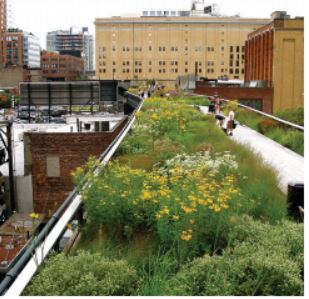
The High Line, New York
The High Line is popular as an eco-friendly park and a public space where people can get a bit of fresh air in New York City. This walkway has harmonized an artificial structure with nature by preserving the original railroad structure along with the growth of grass and plants. The park has implemented unique designs to emphasize the vegetation and flower beds along sidewalks, showcasing various community cultural art projects. It has also focused on the maintenance, management, and operation of the walkway for sustainability. This revamped railroad has been planted with drought-resistant plants to reduce water usage as much as possible. Water supply systems have also been adjusted according to weather patterns and plant species. Leaves and botanical waste have been recycled as compost to reduce carbon emissions. As a result of these efforts, the Whitney Museum of American Art was transferred near the walkway. Moreover, private developments in hotels, offices, and galleries have been boosted, increasing job opportunities and improving the local economy.
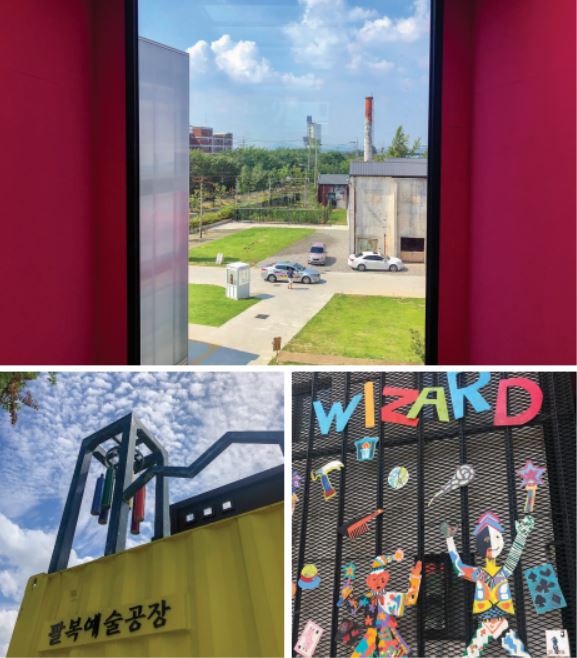
Urban Regeneration in Jeonju: Palbok and Seohak
Since 2017, the city of Jeonju has been working on urban regeneration to revitalize the city. In Jeonju, the regional economic depression was due to the city’s abandoned enterprises, which caused a big problem. Typically, to maintain a city’s population, innovative changes in city structure and function are needed when industrialization emerges.
Until the 1980s, industrialization was the main industry in Korea. The more factories there were, the more affluent the city was. The Palbok area was the main industrial zone in Jeonju, but as time passed by, advanced secondary and third industrial zones appeared, which caused Palbok to be less competitive. Therefore, as factories closed and jobs disappeared, the people in Palbok moved out. To overcome this situation, Jeonju planned a regeneration of Palbok as a place where people could gather, by utilizing abandoned factories. The aim was to bring people together to rejuvenate the area and to increase the quality of life.
The Factory of Contemporary Arts in Palbok (Palbok Art) is a place where people can gather and experience urban regeneration. Unlike the previous building, it has an attractive view where ordinary people can enjoy art and culture themselves. The Palbok Art gallery has programs for infants, elementary and middle students, and for families. It even has programs and facilities for local artists. The Creative Arts School located in the Palbok Art building helps local artists enhance their creative capabilities and aesthetic values through art education. Moreover, the Palbok Art building provides spaces where new and local artists can display their work along with supporting them to experiment and interact with each other.
There is another example of the Jeonju Urban Regeneration Project. It is the Seohak Art Village located nearby Hanok Village. Originally, many students and teachers inhabited this village. It was a simple and elegant village. Unfortunately, it gradually declined due to the decrease of local commercial districts and the fall of residential facilities. While the empty buildings gradually increased, an artist couple settled in, and the abandoned town began to be reborn as an art village. Currently, there are about thirty artists living and performing art there. Artists who prefer quite places to focus on their art settled there. By visiting this area, people can feel its characteristic splendor in silence. When meandering around, many workrooms that are shown through the window will help visitors feel the artists’ genuine creations. Jeonju has encouraged these artists with support through road maintenance and park construction near the village.
The goal of the Jeonju urban regeneration project is to improve the quality of residents’ welfare by enabling residents to enjoy cultural life in the urban environment. Jeonju has been and will continue developing urban regeneration, with the residents, and for the residents.
Imagine a city full of regenerated urban areas. Well-developed cultural complexes, eco-friendly parks to rest in, and nicely formed streets showcasing artists’ work. Unlike the past, cities today are trying to provide welfare and satisfaction to visitors and local residents alike. The desirable ‘urban regeneration’ is a longed-for future project that will continue to develop. Many cases are emerging now, and it is possible that people will look for new and creative cities for the future.
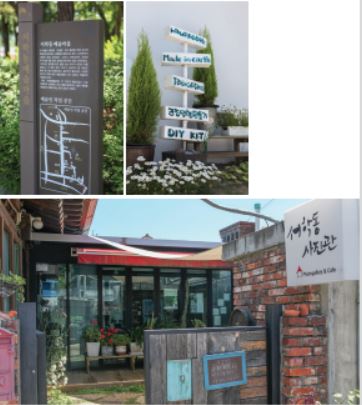
Hong Sammy Editor, Kim Ju Myeong Reporter, Jang In-beom Cub-Reporter

